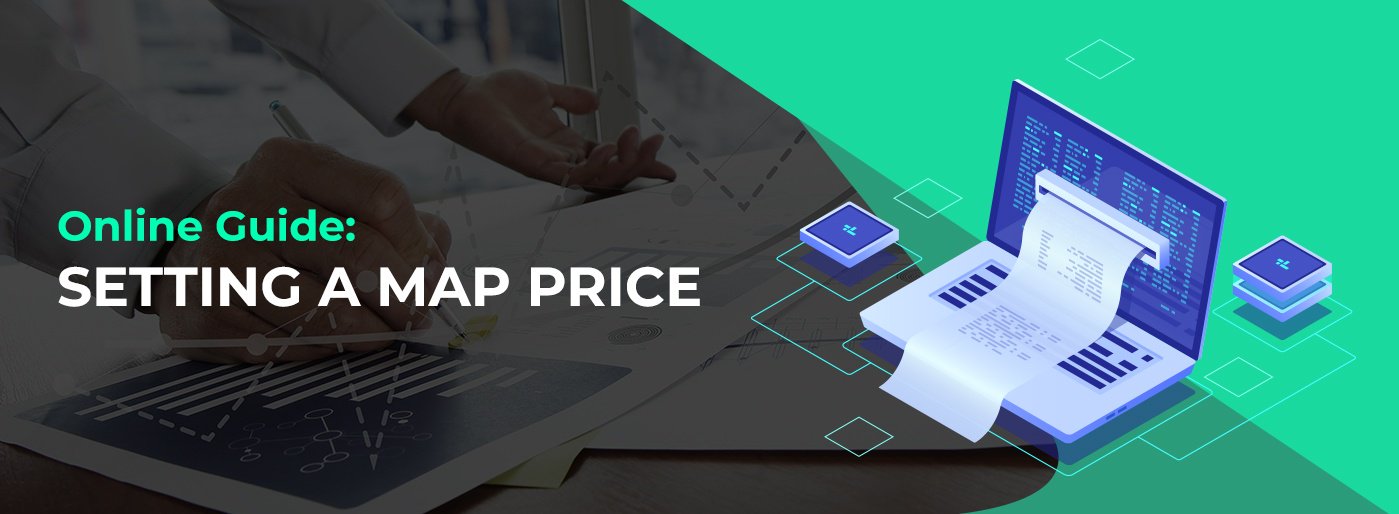Introduction to MAP pricing
Setting your product’s pricing levels for your minimum advertised price (MAP) policy can be a balancing act. You need to simultaneously take into account the interests of several different groups — online retailers, brick-and-mortar retail stores, distributors (if they’re part of your channel), your target customers, etc. And of course, the interests of these different groups are often in direct conflict.
As if that weren’t tricky enough, your MAP pricing also needs to preserve your company’s own profit margins, discourage MAP policy violations, and protect your brand equity and reputation.
In other words, MAP pricing is not a simple, checkbox task. You can’t just arbitrarily pick a minimum advertised price for each product in your line and add it to your MAP policy. For it to be effective, your MAP pricing has to be a strategic, well-thought-out process.
With that in mind, here are a few key strategic issues you should keep in mind when establishing your MAP pricing.
How MAP Pricing protects your brick-and-mortar retail partners
For your MAP policy to be ethical and legal, you need to establish a single minimum advertised price for each product — and apply that guideline to all of your resellers, regardless of their individual situations, overhead or other challenges. Everyone in your resale channel will have to advertise your product at or above the same MAP price.
In the Internet era, your brick-and-mortar retail partners obviously face challenges when going head-to-head on price with their online-only counterparts. And you need to be mindful of this.
If you set your MAP pricing too low — lower than those store-owners can profitably sell your products, given their limited shelf space and other overhead — you might discourage these all-important partners from carrying your lines.
But even if they do find it slightly profitable to keep your inventory in their stores, you still want more from your brick-and-mortar retailers. You also want these partners investing in your products, adding value to your inventory in their stores. Ideally, they’ll order demo and display units, and they’ll train their sales reps on the features and benefits of your products so they can talk about them intelligently to customers.
What this means, though, is that when you’re setting your MAP pricing, you need to keep in mind the unique challenges of your key strategic partner: The brick-and-mortar store. This will be the partner who introduces your products to new customers, who gives on-the-fence buyers a chance to actually see and touch and interact with your products — which might push them over the edge to a buying decision.
Don’t set your MAP pricing in such a way that allows this all-important member of your resale channel to be systematically undersold by online competitors.
Why your wholesale pricing should be small enough to discourage heavy discounting
This might seem a bit contradictory to the first point, but it’s nevertheless a key strategic factor that you also need to weigh in your decision. And that’s the complicated nature of establishing MAP pricing.
You can’t set your MAP prices in a vacuum. When calculating your MAP pricing, you need to think through what margins those prices will create for your retailers — and you want to keep them relatively low across the board for your resale partners. Here’s why.
You need to set your MAP pricing with an eye on the wholesale pricing you’re offering your retailers. Like everything else MAP-related, this will be a delicate balancing act. If you set your wholesale pricing too high, your MAP pricing too low (or both), the profit margins available might not be attractive enough to persuade retailers to carry your products.
But — and here’s where it can get tricky — if you set your wholesale pricing too low or your MAP pricing too high, you’ll be creating the potential for a large spread for your retailers. This means that you’ll be encouraging retailers to offer steep discounts, and some of those discounts will come in the form of MAP violations. Some retailers won’t be able to help themselves to quick profits.
The truth is, your MAP is probably going to be violated at least a few times. But assuming you have a high-quality, automated MAP monitoring and enforcement platform working for you, you’ll be able to quickly catch and take action to correct these MAP pricing violations.
If you carefully establish your MAP pricing such that it doesn’t leave much room for heavy discounting in the first place, you’re much less likely to face MAP violations as a regular problem.
Remember, you can reward retailers for complying with your MAP pricing in ways other than offering them larger margins. For example, you can also offer your MAP-compliant resale partners financial assistance in the form of shared advertising funds.
In the end, your MAP pricing should reflect the brand image you want to create
Finally, when you’ve weighed the other factors above, and you’ve arrived at a strategic plan for establishing minimum advertised prices that meets the needs of all of your key constituents — online retailers, store-owners, distributors, dealers, customers — you still have one key factor to consider.
What will your MAP pricing say about your company, your products and your brand?
Assuming the vast majority of your resale channel abides by your MAP pricing, the price you set for any given product will be the price your customers see just about every time they find that product advertised — whether online or in a physical store.
Again, this will require some strategic thinking, and possibly some balancing against the other factors you’ve already worked through in setting your MAP pricing to keep your various types of resale partners happy.
The prices at which your resellers advertise your products also sends a signal to shoppers — a signal that will only grow stronger over time. If your MAP pricing is too low, your prospects and customers might come to associate your products and brand with low quality, or as a commodity product that has little to offer except its low price.
Set your MAP pricing too high, on the other hand, and your products might come to be perceived as out of reach for the average shopper. And with time, this might dissuade many of your most important retail partners from continuing to offer your product line.
MAP Pricing Works Only When Supported by Effective MAP Enforcement.
One final point to keep in mind: Your MAP pricing, no matter how strategically sound, won’t help with any of these factors — and could even drive away some of your key retail partners — if you don’t have an effective system in place for monitoring and enforcing those MAP prices. If you’d like help with setting up such a system, schedule your free demo.


